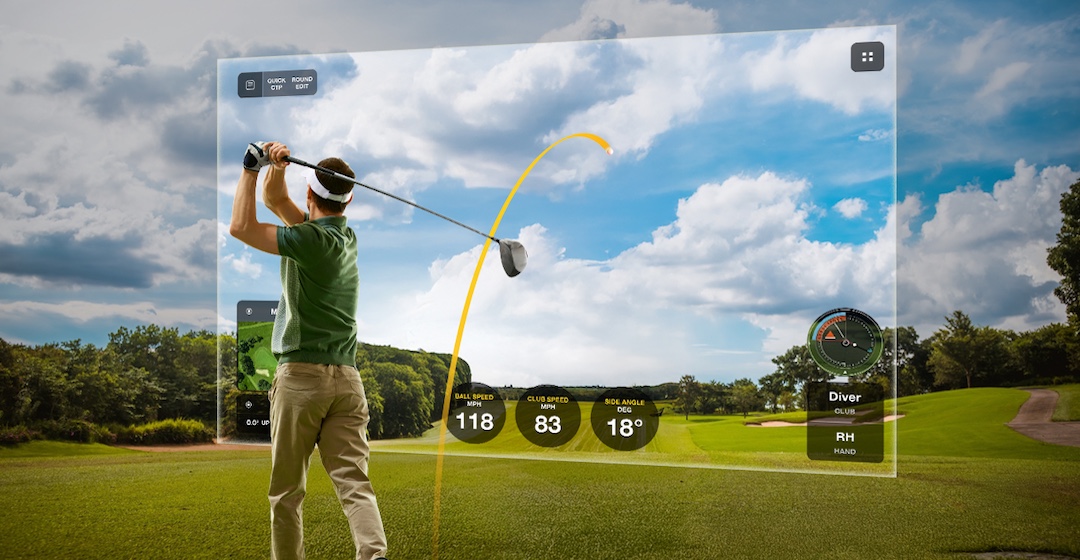The global golf equipment market is in the middle of a quiet revolution. By 2032, it’s projected to hit $23 billion, up from around $17.2 billion in 2025. That might not be a shock to anyone who’s walked into a pro shop or browsed online recently, but the bigger story isn’t just the dollars—it’s what’s driving the demand and how it’s reshaping the industry at large.
This growth isn’t just about more golfers—it’s about how they shop, what they want, and where the game is growing next.
The Tech Arms Race in Equipment
Gear is smarter, lighter, and more dialed in than ever before. From carbon fiber shafts and titanium faces to AI-designed golf balls, equipment makers are throwing the kitchen sink at innovation—and players at every level are eating it up.
Even off the course, smart tech like GPS-enabled watches, launch monitor apps, and swing-analyzing sensors are reshaping how golfers understand their game. The result? Golfers are more informed, more obsessed with data, and more willing to spend on gear that promises improvement.
On top of that, eco-conscious options—like biodegradable balls and recycled club components—are becoming a legit category. Green tech in golf isn’t just a marketing spin anymore. Consumers are starting to care, and the brands that lean into it could win big.
A Broader, Younger, and More Diverse Golf Crowd
Once seen as a sport for the country club elite, golf is now hitting with a wider demographic—and that’s changing everything from the gear being made to how it’s being sold.
Younger players want customization, tech integration, and style. They're not just buying clubs—they’re building their bag like it’s a sneaker rotation.
Women golfers are entering the sport in record numbers, finally driving serious product development and marketing tailored to their needs.
Beginner-friendly gear is getting better and more affordable, helping courses attract families and newcomers in ways that didn’t exist even a decade ago.
This shift isn’t just a trend—it’s fueling real change in how manufacturers design, price, and position their gear.
Where It’s Happening: Global Hotspots
North America still dominates the market, no question. The U.S. has the courses, the cash, and the golf culture to drive gear sales in volume. But we're seeing Asia-Pacific heating up fast, especially in China, South Korea, and Japan, where middle-class growth and investment in golf infrastructure are turning new players into serious consumers.
In Europe, Spain and the UK remain strongholds, while places like the Middle East—especially the UAE—are tapping into golf tourism in a big way, which often translates into retail and rental gear sales.
Bottom line: the market isn’t just expanding—it’s globalizing.
Retail Shake-Up: Custom, Click, Buy
One of the biggest shifts in the last few years is how golfers are buying their gear.
Online shopping is exploding, especially with younger golfers who don’t need to swing it before they buy it. Reviews, videos, tutorials, and virtual fittings have changed the game. The traditional pro shop still has its place—but e-commerce is now a dominant force.
And customization? It’s no longer a luxury—it’s expected. Golfers want fitted shafts, unique grips, monogrammed balls, and clubs that match their swing speed and vibe. That’s opened the door for smaller boutique brands and premium upcharges, while pushing the big names to offer more bespoke options.
What Could Slow Things Down?
There are still speed bumps. Premium gear remains pricey, which can scare off beginners.
Knockoffs and fakes also continue to muddy the waters for brands trying to maintain quality control. And with more players entering the space, staying innovative without pricing out new customers will be key.
But most signs point up. With smart tech, sustainability, and personalization driving momentum, the equipment market is arguably in its most exciting chapter ever.
Final Thought
Golf is getting younger, more global, more tech-forward, and more accessible—and the equipment space is reflecting that shift in real time. Whether you’re a course operator, a brand, or just a gear junkie, this next era of golf isn’t just about swing speed and launch angle—it’s about meeting a new wave of players where they are and delivering products that feel as modern as the moment.

Golf Gear Is Booming; Here’s What’s Fueling the Surge
Golf gear is rolling, with tech, customization, and global demand driving the market to $23B by 2032—reshaping how and where golfers buy and play.






